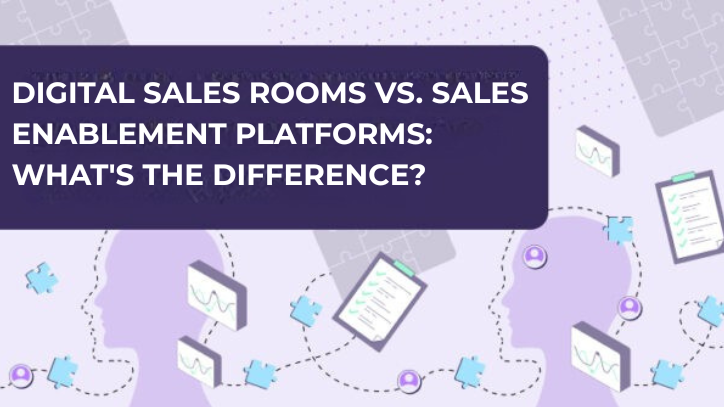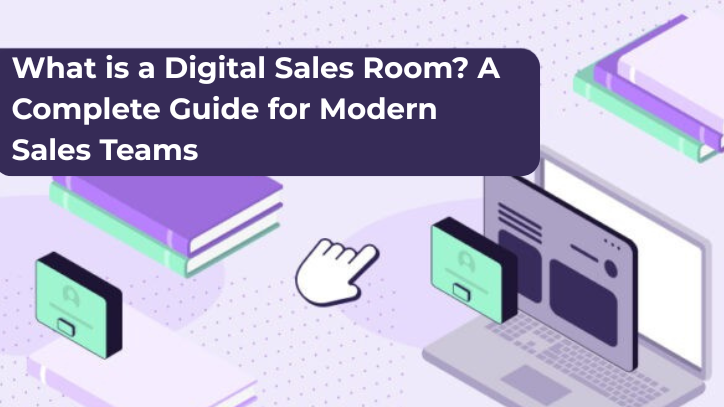“You SPIN my sales right round, right round /
When you go down, when you go down down”
That’s how the lyric goes, no?
Either way, selling in the B2B space is complicated even if you’re an expert. Prospects expect more personalization than ever, shorter sales cycles, and more flexibility from their sales reps. In order to really succeed, you need to be able to let your prospects know immediately that you truly understand their pain points and can help them—before you attempt to sell your products or services.
One of the best ways to do this is to use the SPIN selling method. It helps your sales team understand where their customers are coming from, where they are in the B2B sales funnel, and what they need from your business. The SPIN methodology works by asking a series of critical questions to gain insight into the customer’s position before diving into the pitch.
Learning how to implement SPIN selling and the main question types your sales staff can deploy is paramount for success in the B2B industry.
What is SPIN selling?
Neil Rackham devised SPIN selling in the 1980s. Rackham found that successful sales calls shared a common pattern of questioning, which he dubbed SPIN.
SPIN stands for the four types of questions that he identified: Situation, Problem, Implication, and Need Payoff.
Dividing sales questions into these four categories removes some of the ambiguity and difficulty of negotiating a sale by identifying common themes that help sales reps connect with prospects. By providing your team with broader categories of questioning, you empower them to naturally bring up questions that fit the mood and the prospect instead of reading from a list of hyper-specific questions that were pre-addressed to consumers.
What is the SPIN selling methodology?
The theory behind the SPIN selling sales methodology is that it gives sales teams the ability to offer customers the feeling that they are being fully understood and that their pains and issues will be properly addressed.
Instead of a hard sell based on product or solution features, you let clients draw their own conclusions and realize their need for your offering by themselves.
The SPIN method, like the Challenger Model, is a surefire way to solve the problems of potential customers and avoid the monotony of a classic sales pitch. By combining the Challenger Model and the SPIN selling method, sales reps can take control of the sale and close the deal.
8 benefits of SPIN selling
SPIN selling has many benefits that enhance sales conversations and conversion rates.
Here are some of the benefits your sales team can enjoy by using the SPIN method:
- Makes it easier to understand the prospect and their pain points
- Helps reps figure out how prospects make buying decisions
- Gives insights into the prospects’ buying process
- Creates a more authentic relationship, which builds trust between prospect and seller
- Allows sales reps to avoid the pitch stage by closing the deal during a more to-the-point and casual conversation
- If the SPIN selling technique is performed well, sales reps will have fewer objections to handle than usual because it will allow them to position your SaaS products or services as an effective solution to the prospect’s pain points
- Provides a solid framework for planning sales activities and efforts that focus on the prospects’ behavior
- Creates an effective action plan for the development of your sales reps’ on-the-job skills
SPIN selling questions and examples
Ok, it’s the moment we’ve all been waiting for. Let’s get into what the four types of questions are and we’ll give you some examples of each.
Situation questions
As the name implies, situation questions help the sales rep understand the buyer’s current situation. Sales reps often go straight into a hard sell without understanding the client’s circumstances, focusing on the product they are selling instead of the customer and their needs.
Situation questions let sales reps take a moment to understand what’s going on in the customer’s business and how your product might assist them with solving that issue. It establishes the context to adjust and personalize their sales pitches, making them more effective.
Examples of situation questions:
- What are your current processes like?
- What tools are you currently using?
- What have you used in the past? What was the result?
- How often do you use these tools?
Problem questions
Once you have an understanding of the prospect’s current situation, you can start digging a bit deeper.
Problem questions determine the different problems your client experiences. It’s crucial to gain insight into the problem from the client’s point of view— not your own. If the customer isn’t aware that they have a problem, they don’t actually have a problem! Helping both sides understand the problem allows your sales team to eventually illustrate the ways your product solves these issues.
It’s important not to immediately start pitching the ways your product can solve their problems. At this stage, just listen to their answers and ask follow-up questions.
Examples of problem questions:
- Do you feel that your processes are as good as they could be?
- What holds you back in your current process?
- When do these problems usually occur?
- What causes this problem?
- Who experiences this problem?
- How does this impact your team’s productivity/stakeholder buy-in/operations?
Implication questions
We now understand your prospect’s workflow and the issues they face. Now it’s time to gain a better understanding of the scope of these problems.
Implication questions hone in on the problems you have discovered and help your prospect understand what these problems are truly costing them. Because while your client may know that they have certain problems in the business, they may not have thought about all the ways these problems are costing them in terms of money, time, and resources lost.
Implication questions will help your customers realize that they are not utilizing their assets as well as they can be and help generate a sense of urgency.
Examples of implication questions:
- How much time do you waste on ineffective processes every week?
- How much more do you think your teams could achieve if they didn’t face those issues?
- Have these issues ever impacted your ability to deliver services/goods to customers?
- How does this affect cash flow into the organization?
- Have there been customer complaints or cancellations because of these issues?
Need payoff questions
This section will bring together all the others because now, finally, it’s time to discuss your prospects’ needs and how you can help.
Instead of telling them that your solution will help them solve their problems, the goal of this step is to let them reach this conclusion on their own. The way to do that is with need payoff questions.
You’ve already set the stage by making sure that the buyer and seller are on the same page regarding the problems they are facing and the impact of those problems. So, if they did a good job setting the stage, the client at this point should realize that they need a solution.
Now you can illustrate why your business has the perfect solution that can help them resolve their pain points.
Examples of need payoff questions:
- Would a tool that automates your manual processes reduce overtime spending/improve delivery?
- Would that be valuable to your team?
- What sort of savings would your team produce if you could automate some of your processes?
- Would Y help with achieving/eliminating X?
- How useful would it be if your team could…?
Additional tips for implementing the SPIN selling technique
If you’ve made it this far, we want to give you some bonus tips that you can take along with you. Because, while the SPIN selling technique is as simple as asking questions in the right format and order, it may take some practice to get it right.
Here are a few tips that can help your sales reps connect with their prospects:
- Ask provoking questions: Sales reps who want to stand out need to say things that engage the buyer. Prospects don’t like salespeople who just say nice things to them. Instead, they trust those who challenge them to take a look at their problems in a new way. So if you want to set yourself apart, connect with your prospects by asking provocative questions.
- Turn off the excessive enthusiasm: We all know the stereotype of that aggressive salesperson who is excessively – and annoyingly – positive. Take it down a notch and remember that salespeople don’t have to be overenthusiastic. Instead, focus on being genuine since talking with an authentic person is refreshing. Remember that this also doesn’t mean you should be rude to your prospects in your efforts to appear genuine.
- Make everything about the prospect: There’s not much about this one. Salespeople should try to focus on what the prospect needs. Being too salesy is a turn-off and prevents reps from establishing solid relationships with prospective customers.
- Let the prospect talk more: Talking less and listening more is a surefire way to establish a great connection with a prospect. Sales reps know this while engaging with prospects, allowing them to talk more.
- Understand key challenges: Sales reps should ask questions that focus on the prospect’s frustrations and dig deep to find out how said frustrations affect them.
- Ask open-ended questions: When you ask a question, give your customers the floor to elaborate. Instead of asking, “Do you normally do…?” ask, “How do you normally…?” This forces the customer to go into detail and gives you more insight.
- Don’t skip your homework: Questions should not replace background research and qualification. You should go into a sales call already knowing as much as you can about the size of the company and the problems they experience as possible.
- Do not talk about your product/solution until the end: Follow the sequence of questions carefully before pitching your solution.
- Use your demo platform to your advantage: When it comes to letting your prospects understand how your product can help them, you can utilize a customizable product demo platform like Walnut. This will allow them to try the product for themselves and get a feel for how it works.
Customer-centric selling is the only way to sell
The SPIN methodology is so effective because it puts the needs of the customer front and center from the start. Sales representatives grow to understand each prospect’s unique situation, their problems, and the impact of those problems so that they can focus on the pain points that your product/solution can solve.
If you want to create a truly customer-centric buying experience for each prospect, you need to arm your sales team with a platform that’ll allow them to create interactive and personalized sales demos. They will then be able to show, rather than tell, prospects about your product’s value during the needs-payoff stage.
Use a platform like Walnut to reinvent the sales experience and offer your prospects a valuable, personalized, consistent, human, and transparent sales process that addresses their specific pain points—every time. From the discovery call, all the way through your negotiations and even through your customer success process, Walnut will help your buyers love buying your product.
Ready to revolutionize your product demos? Book a meeting with us now by clicking that “Get Started” button on the top of the screen.





